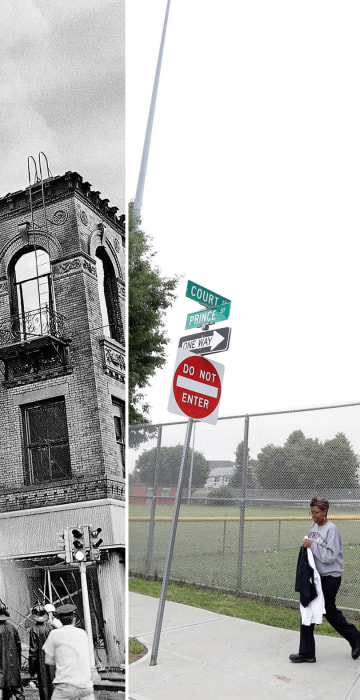
U.S. news
Then and Now: Newark Riots Echo in City 50 Years Later
Fifty years ago, Newark burned for four nights as many of its black citizens lashed out in retaliation against city government and police.
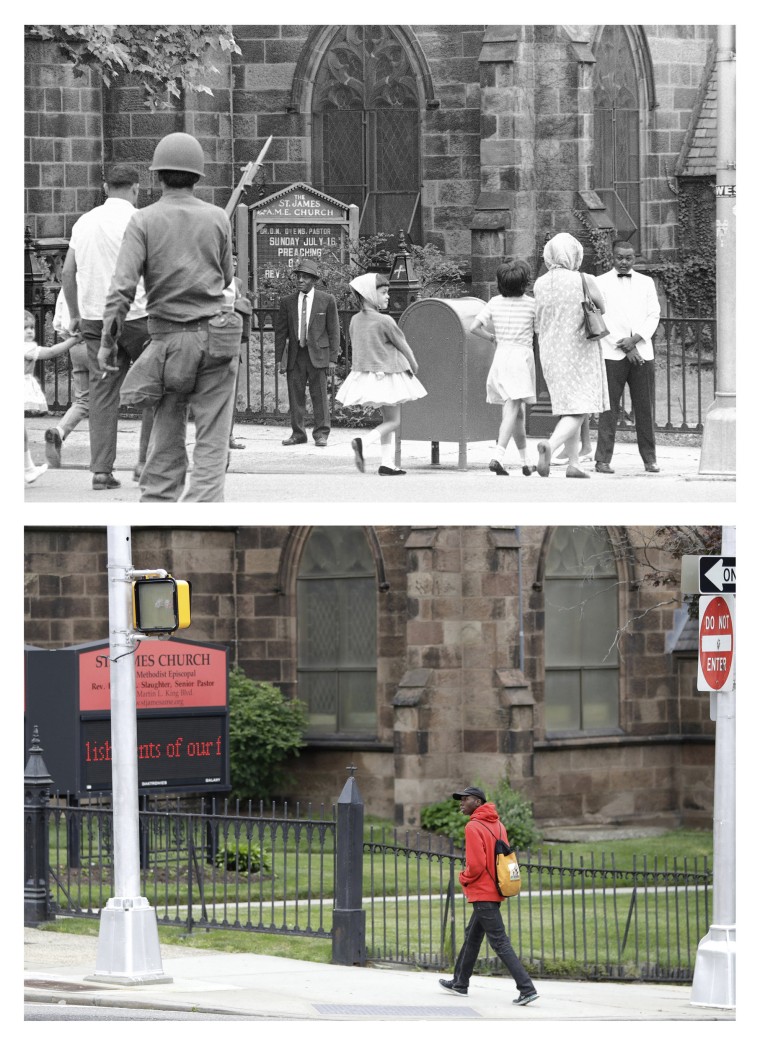
Churchgoers pass a National Guard roadblock in Newark, New Jersey, in front of the St. James A.M.E. Church during the Newark riots on July 16, 1967. On June 16, 2017, a man walks past the same spot 50 years later.
On July 12, 1967, rumors spread that police had killed a black man. Though the story was untrue — the man was beaten, but survived — pent-up rage led to four nights of riots and looting. Newark took its place in that long, hot summer alongside about 150 other disturbances across the United States.
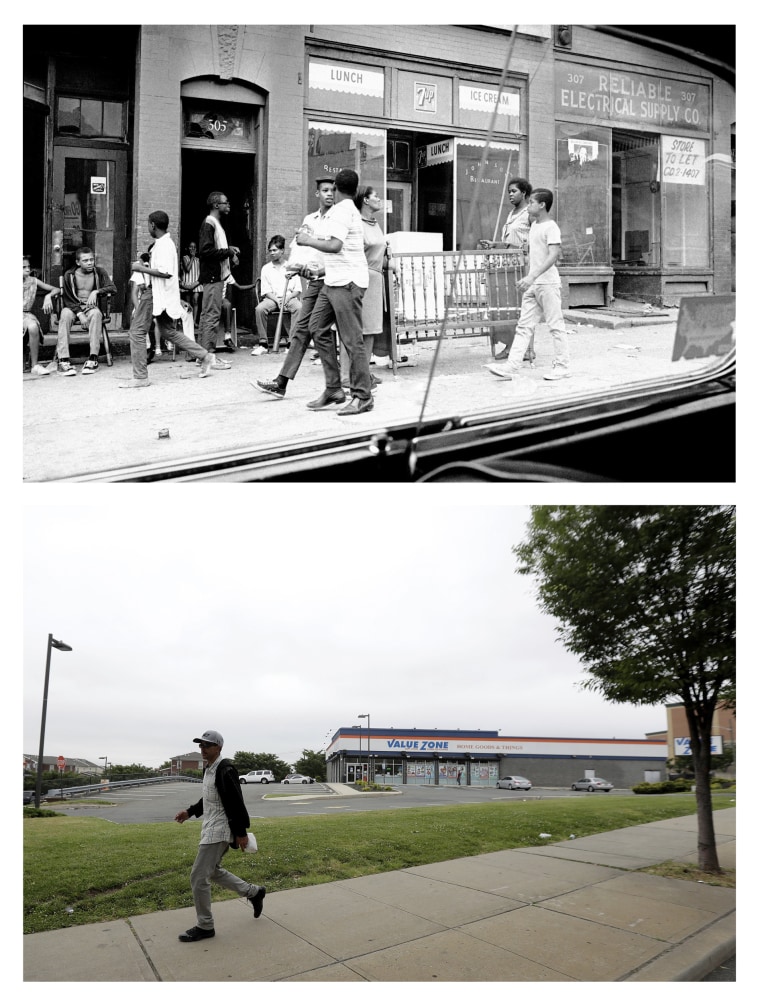
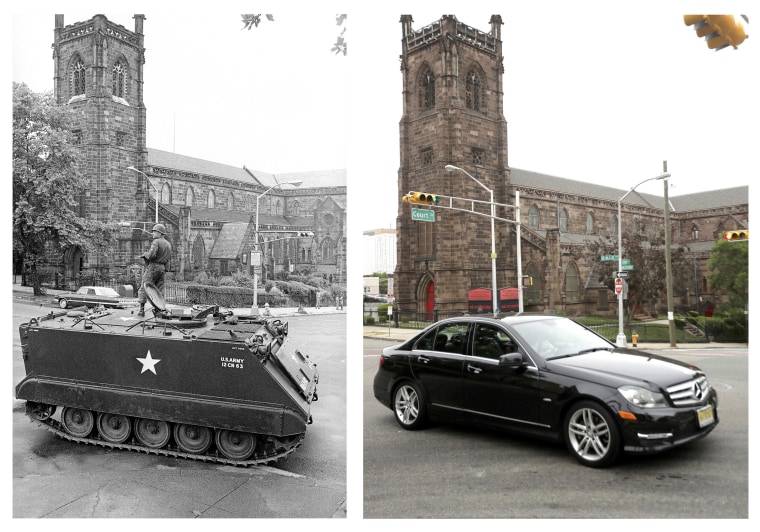
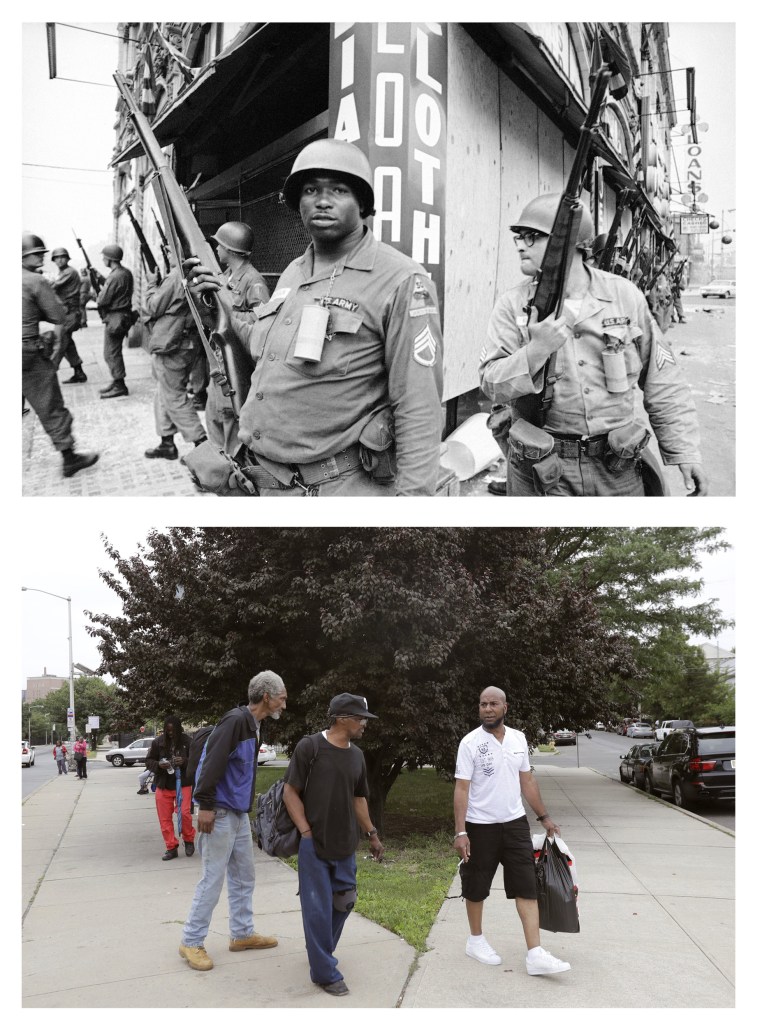
National Guardsmen stand at the corner of Springfield Avenue and Mercer Street in Newark on July 14, 1967. On June 16, 2017, men walk past the same corner with greenery where buildings once stood.
Twenty-six people died in the course of the riots, and property damage was estimated at $10 million - more than $73 million in today’s dollars.
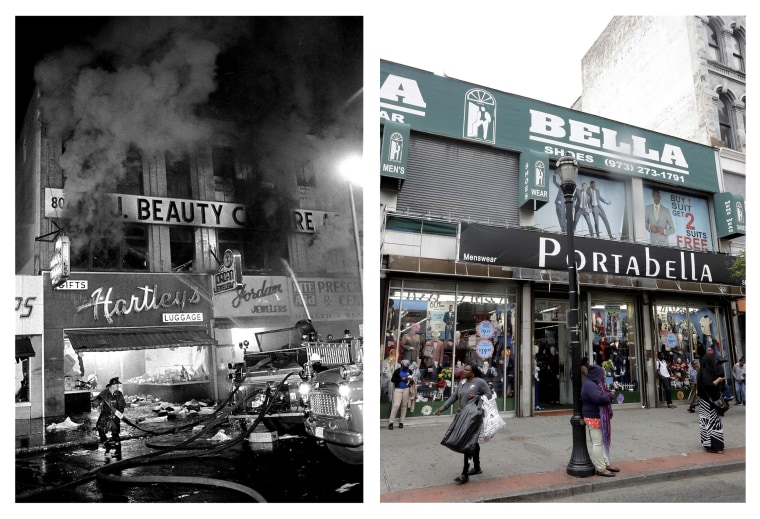
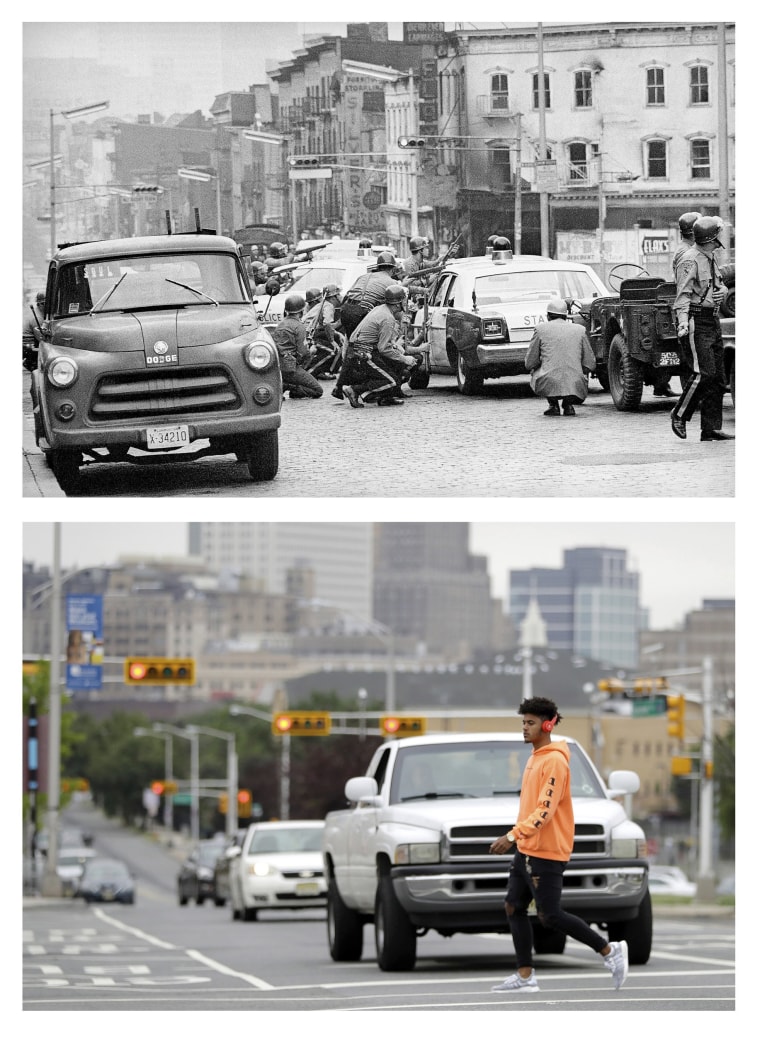
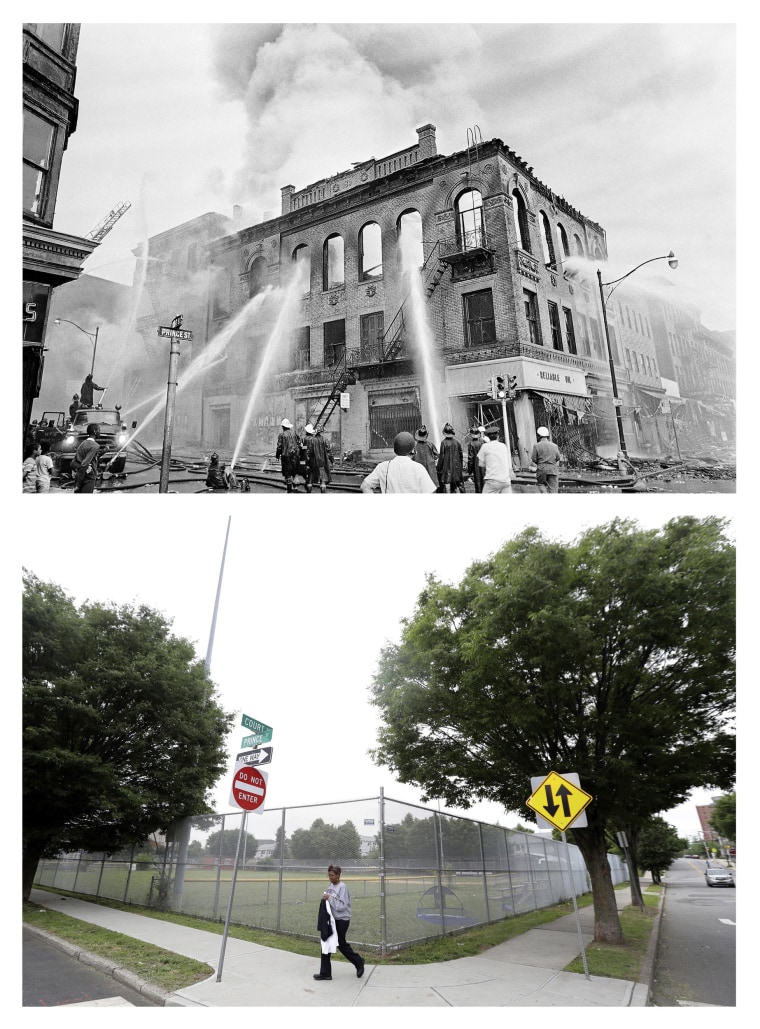
Firefighters direct streams of water onto a burning building at the corner of Prince and Court Streets in Newark on July 15, 1967. On June 16, 2017, a woman carries her clothes past a ball field in the lot on the same corner where the burning building once stood.
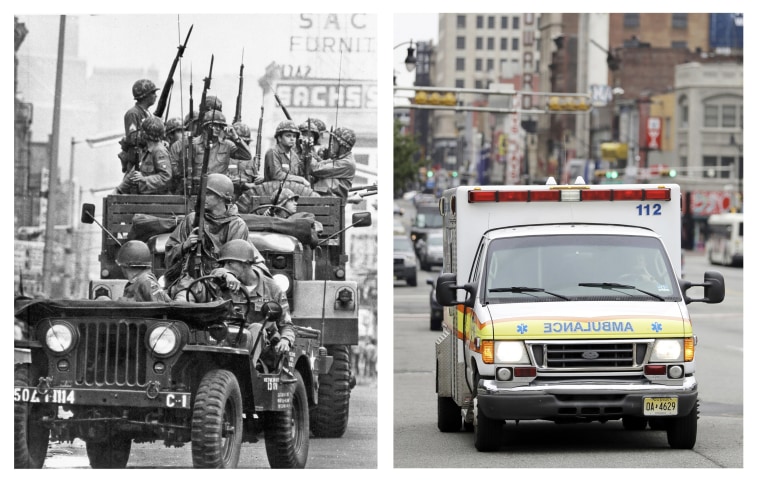

A National Guard truck rolls alone along Orange Avenue in Newark on July 17, 1967, as troops prepare to leave the city after four days of deadly violence and looting. On June 16, 2017, women stroll under umbrellas on the same stretch of street 50 years later.
As these photographs show, there is life in New Jersey’s largest city, a half-century after its darkest moments. There are new restaurants, new business and housing, and the city’s boosters are touting a rebirth.
RELATED: Newark riots recall an era echoed by Black Lives Matter